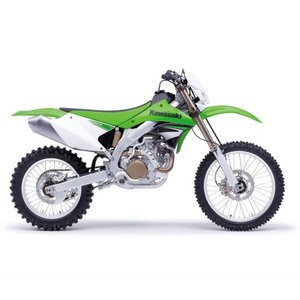Kawasaki KLX 450 R [2008–2020]: A Trailblazer’s Companion Tested
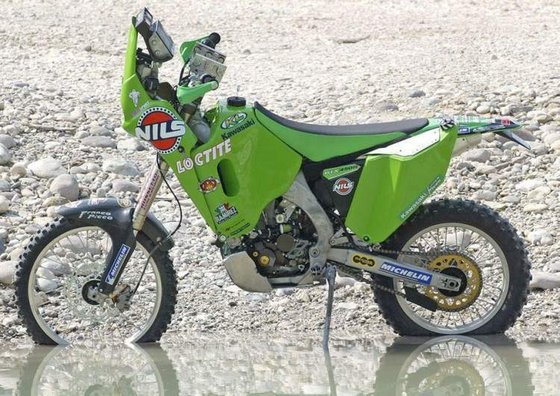
Introduction
The Kawasaki KLX 450 R is a machine that refuses to fade into obscurity. From its debut in 2008 to its final production year in 2020, this enduro stalwart carved a niche as a reliable, adaptable, and surprisingly refined off-road weapon. Born from the DNA of Kawasaki’s championship-winning KX450F motocrosser, the KLX 450 R wasn’t just a green-stickered afterthought—it was a purpose-built trail conqueror. After spending days thrashing a well-maintained 2017 model through rocky riverbeds, forest singletracks, and even a makeshift motocross track, here’s why this bike still resonates with riders who value substance over hype.
Engine Performance: Torque Meets Tactical Restraint
At the heart of the KLX 450 R lies a 449 cc liquid-cooled single-cylinder engine, a derivative of the KX450F’s fire-breathing powerplant but retuned for off-road sanity. Kawasaki’s engineers didn’t just detune this engine—they reimagined it. The flywheel mass was doubled, cam profiles were softened, and steel exhaust valves replaced titanium ones for durability. The result? A powerband that prioritizes traction over theatrics.
Key Takeaways:
- Low-Mid Dominance: The KLX pulls cleanly from idle, making it a master of technical climbs and mud-slicked trails. There’s no arm-yanking hit—just a linear surge that forgives lazy throttle control.
- Carburetor Charisma: The Keihin FCR 40 mm carburetor (with throttle position sensor) delivers crisp response. While fuel injection dominates modern bikes, the FCR’s simplicity shines in remote areas—no ECU nightmares here.
- Dual-Starter Reliability: The combo of electric start and kickstarter is a godsend. Even after a tip-over in a creek, the starter whirred back to life without drama.
By the Numbers:
- 56.4 hp @ 8,500 rpm (41.5 kW)
- 50 Nm torque @ 7,500 rpm (37 lb-ft)
- 5-speed transmission (pre-2013) / 6-speed (post-2013): The wider ratios post-2013 improve highway comfort, but both versions excel in the dirt.
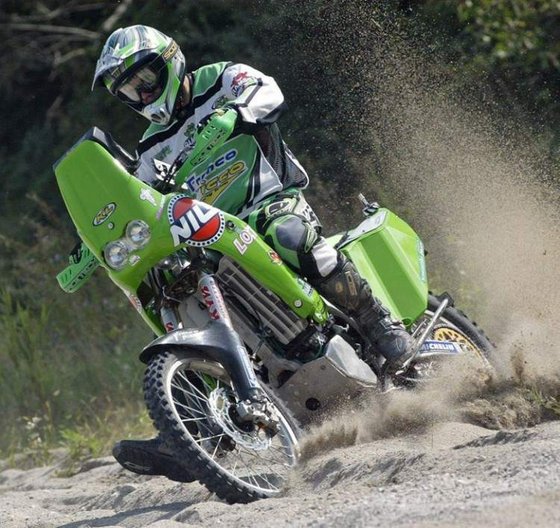
Chassis and Handling: Precision Meets Plushness
The KLX’s aluminum perimeter frame is a work of art—stiff enough for aggressive riding yet compliant over roots and rocks. Paired with KYB’s AOS (Air-Oil Separate) forks and a Uni-Trak rear shock, this bike feels like it’s reading the terrain ahead.
Suspension Specs:
- Front: 48 mm inverted forks, 305 mm travel (12.0 in), 22-way compression/18-way rebound adjustment
- Rear: Uni-Trak shock, 315 mm travel (12.4 in), adjustable high/low-speed compression
- Setup Tip: For tighter trails, reduce high-speed compression damping to absorb square-edged hits without kicking.
Handling Notes:
- The 1480 mm (58.3 in) wheelbase strikes a balance between stability and agility.
- Petal discs (250 mm front/240 mm rear) offer consistent bite, even when coated in mud.
- At 126 kg (278 lbs) wet, it’s no featherweight, but the mass centralization masks the heft.
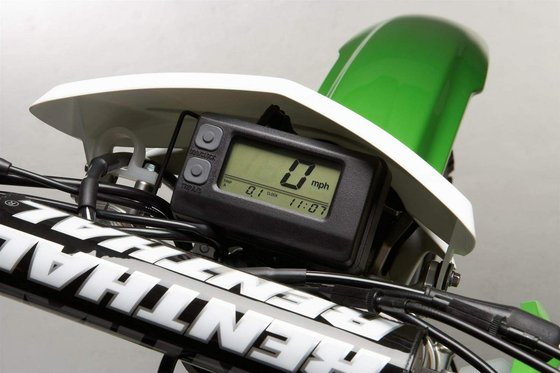
Off-Road Capabilities: Where the KLX Earns Its Stripes
Terrain Tested:
- Rock Gardens: The 315 mm (12.4 in) ground clearance laughs at embedded boulders. A skid plate is still wise for serious abuse.
- Sand Washes: The torquey engine bulldozes through deep sand, though taller gearing would help at speed.
- Technical Ascents: The 935 mm (36.8 in) seat height intimidates shorter riders, but the narrow chassis aids grip shifts.
Weak Spot: The 8-liter (2.1-gallon) fuel tank. Serious adventurers will crave aftermarket options (more on that later).
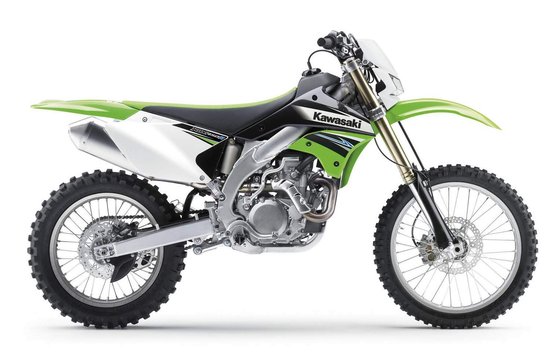
Ergonomics and Comfort: Long-Haul Credentials
Kawasaki prioritized rider fatigue reduction:
- Seat: Wider than the KX450F’s, with a grippy top and smooth sides for easy weight shifts.
- Handlebar: Renthal alloy bars (971 bend) offer a neutral stance—no wrist cramps after hours.
- Vibration Control: Rubber-mounted pegs and a balanced engine keep buzz at bay.
Gripe: The choke lever is comically tiny—gloved fingers fumble. An aftermarket extended lever solves this.
Competition: How the KLX Stacks Up
Rivals Include:
- Honda CRF450X: Lighter (118 kg) with FI, but less low-end grunt. KLX wins for torque addicts.
- Yamaha WR450F: More aggressive powerband, higher maintenance intervals. KLX suits riders valuing durability.
- KTM 450 EXC: Lighter, FI-equipped, and pricier. KLX appeals to budget-conscious riders avoiding dealer visits.
KLX’s Edge: The dual-start system and carburetor simplicity make it a backcountry favorite.
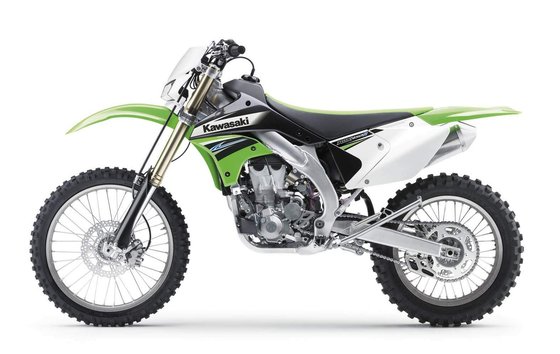
Maintenance: Keeping the Green Machine Alive
Key Considerations:
- Valve Checks: Every 40 hours. Steel exhaust valves last longer than titanium rivals.
- Carb Tuning: Clean the FCR every 50 hours—watch for clogged pilot jets. Upgrade to a JD Jet Kit for altitude flexibility.
- Suspension Service: Rebuild forks/shock annually if ridden hard. MOTOPARTS.store offers KYB rebuild kits.
- Chain Care: The sealed O-ring chain thrives with regular cleaning and DID Chain Lube.
Upgrade Recommendations:
- Fuel Tank: IMS 12-liter tank for extended rides.
- Exhaust: FMF Q4 silencer for a throatier note without decibel guilt.
- Skid Plate: Hyde Racing polymer guard for impact protection.
- Air Filter: Twin Air dual-stage filter for dusty conditions.

Conclusion: The Unpretentious Workhorse
The KLX 450 R isn’t the flashiest or the lightest, but it’s a rare breed—a bike that’s equally at home in a hare scramble or a multi-day backcountry expedition. Its carbureted engine and steel valves may seem archaic, but in a world of finicky electronics, the KLX is a beacon of simplicity. For riders who value reliability over razor-edge performance, this Kawasaki remains a compelling choice. And when the trails get gnarly, remember: MOTOPARTS.store has the upgrades to make your KLX truly unbreakable.
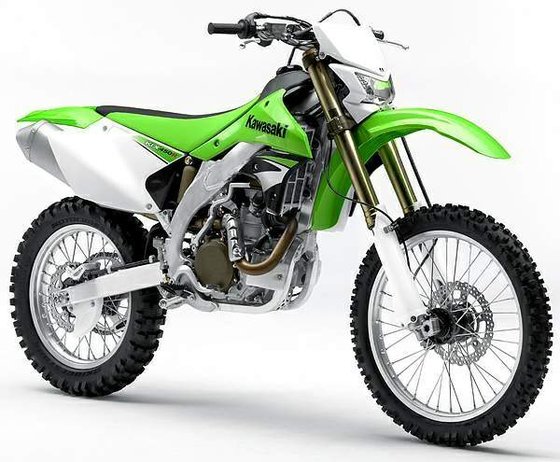


Specifications sheet
| Engine | |
|---|---|
| Stroke: | Four-stroke |
| Max power: | 42 kW | 56.0 hp |
| Max torque: | 50 Nm |
| Fuel system: | Carburetor, Keihin FCR MX40 |
| Max power @: | 8500 rpm |
| Displacement: | 449 ccm |
| Max torque @: | 7500 rpm |
| Configuration: | Single |
| Cooling system: | Liquid |
| Compression ratio: | 12.0:1 |
| Lubrication system: | Forced lubrication, semi-dry sump |
| Number of cylinders: | 1 |
| Valves per cylinder: | 4 |
| Dimensions | |
|---|---|
| Wheelbase: | 1480 mm (58.3 in) |
| Dry weight: | 115 |
| Wet weight: | 126 |
| Seat height: | 940 mm (37.0 in) |
| Overall width: | 820 mm (32.3 in) |
| Overall height: | 1255 mm (49.4 in) |
| Overall length: | 2180 mm (85.8 in) |
| Ground clearance: | 320 mm (12.6 in) |
| Fuel tank capacity: | 8.0 L (2.1 US gal) |
| Drivetrain | |
|---|---|
| Final drive: | chain |
| Chain length: | 118 |
| Transmission: | 5-speed |
| Rear sprocket: | 47 |
| Front sprocket: | 15 |
| Electrical | |
|---|---|
| Battery: | 12V 4Ah |
| Starter: | Electric & kick |
| Headlight: | 35W halogen |
| Tail light: | LED |
| Maintenance | |
|---|---|
| Rear tire: | 110/100-18 |
| Chain type: | Sealed O-ring |
| Engine oil: | 10W40 |
| Front tire: | 80/100-21 |
| Spark plugs: | NGK CR8E or NGK CR8EIX |
| Engine oil capacity: | 1.2 |
| Valve clearance (intake, cold): | 0.10–0.20 mm |
| Valve clearance check interval: | 24,000 km / 15,000 mi |
| Valve clearance (exhaust, cold): | 0.20–0.30 mm |
| Recommended tire pressure (rear): | 1.6 bar (23 psi) |
| Recommended tire pressure (front): | 1.4 bar (20 psi) |
| Chassis and Suspension | |
|---|---|
| Rake: | 27.1° |
| Frame: | Aluminum perimeter |
| Trail: | 122 mm (4.8 in) |
| Rear brakes: | Single 240mm petal disc, single-piston caliper |
| Front brakes: | Single 250mm petal disc, dual-piston caliper |
| Rear suspension: | Uni-Trak linkage system, 22-way low/high-speed compression and rebound damping |
| Front suspension: | 48mm inverted AOS-type cartridge fork, 22-way compression and 18-way rebound damping |
| Rear wheel travel: | 278 mm (10.9 in) |
| Front wheel travel: | 285 mm (11.2 in) |



